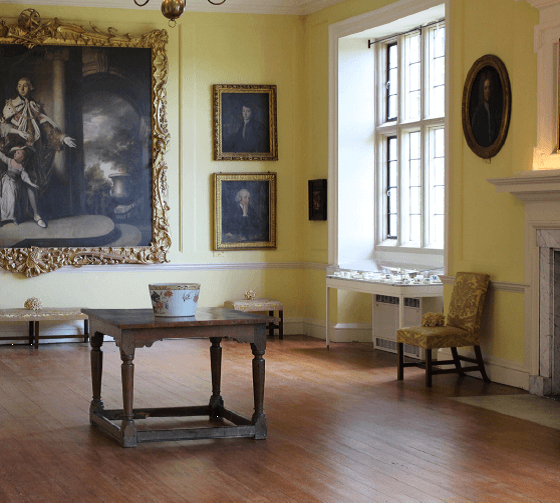Project
Doddington Hall heating refurbishment and upgrade.
The Challenge
To provide a unique heating solution that is sympathetic to the fabric and fittings of a 17th century building.
Background
The hall was built by Robert Smythson, who was a renowned architect of the period. The building retains nearly all of its original design features, although the decorative style internally was refreshed in an elegant Georgian style in 1762. Nowadays, Doddington has become a hub for several businesses, including a farm shop, cafe, restaurant, bike shop, home interiors and clothing store. Doddington itself is still very much a family home to James and Clare Birch, although some income is generated through public tours of the spectacular 90ft Long Gallery with its collection of superb paintings, along with other rooms that have been granted public access. Doddington is also renowned for hosting weddings and other large corporate events.
Consultation and Design
Smith’s Environmental Products were consulted by Ian Sheldon Plumbing Services Ltd to identify a range of solutions that would adequately heat the hall’s expansive rooms. Some areas of the building had previously been heated with fan convectors, but they had long since ceased to be effective. Whereas, the Long Gallery on the top floor had never been heated and there was concern over potential deterioration of the fabric of the building because of this.
The overriding concern throughout the building was to prevent overheating, as this would have a potentially negative affect on the antique furnishings and artwork.
The Solution
Ian Sheldon and Simon Butcher (Smith’s Technical Services Manager), formed a strong partnership with the estate’s facility manager to create bespoke solutions for each room. Caspian FF and UVC units were deployed to provide a discreet solution. To enhance this further, many of the units were produced in colours to match the historic and beautiful interiors.
Fan speed controls were provided on the units in varying positions, to allow the staff and family to control the output, whilst maintaining the required aesthetics. Every room is controlled by an RF room stat and where there is more than one heater in a room, they are linked together by a 0 – 10V signal cable. This solution again helped to reduce to a minimum any unwarranted visual impact of thermostats. The FF units have been used with a reverse air flow to further reduce any impact on artefacts and exhibits. Ian’s team have installed blending valves to reduce the flow temperature to 50oC, this in effect causes the units to be LST, but means the outputs can be increased by raising the flow temperature if required.
Performance
Smith’s have retained regular contact with Ian and his team throughout the refurbishment project. Ian commented that “Smith’s had been pivotal in providing an outstanding heating solution” and that “without the partnership approach from Smith’s, the project would not have happened”.
From the Smith’s perspective, Simon believes that the best outcome is only deliverable where the contractor and client are able to design projects with the full cooperation and involvement of Smith’s. Working closely with the project management team allows us to fully understand the requirements and concerns that relate to a project as sensitive as this one.

